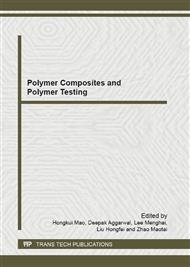p.268
p.273
p.278
p.282
p.288
p.293
p.298
p.303
p.308
Simulation of Cavitation Erosion in Different Throttling Pipelines
Abstract:
There often exists cavitation erosion, large energy loss and big noise in throttling pipelines. In this study, the three-dimensional (3D) model of the secondary throttling pipeline was constructed according to the actual structure and parameters. Adopting the finite element method (FEM) for flow field calculation, the secondary and ordinary throttling pipelines have been calculated respectively under different working conditions, and the distribution maps of velocity and pressure fields in the pipelines have been constructed. The analyzed results demonstrate the applicability of the calculating model. It has also been shown that the cavitation erosion resistance of the secondary throttling pipeline is better than that of the ordinary throttling pipeline. Cavitations first appear at the entrance of throttling pipelines, and as the pressure difference between the two ends increases, the cavitations appears inwards. This result is significant for choosing and designing the throttling pipelines.
Info:
Periodical:
Pages:
288-292
Citation:
Online since:
April 2012
Authors:
Keywords:
Price:
Сopyright:
© 2012 Trans Tech Publications Ltd. All Rights Reserved
Share:
Citation:


